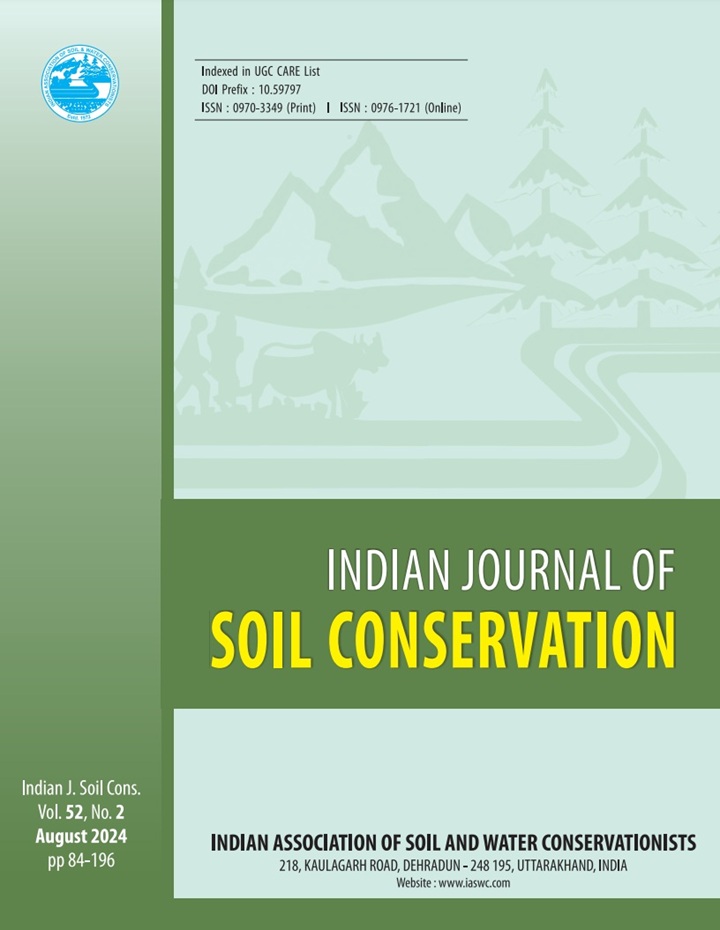Spatio-temporal dynamics of groundwater quality using hydro-chemical and geospatial techniques in Chikkaballapura taluk, Karnataka, India
DOI:
https://doi.org/10.59797/ijsc.v52.i2.166Keywords:
Groundwater quality, Gibbs plot, Pre-monsoon, Post monsoon, Water typesAbstract
A research study was conducted to assess the groundwater quality of sixty-eight bore wells and hydrochemistry in the Chikkaballapura taluk of Karnataka, India during the pre-monsoon (March 2022) and post-monsoon (November 2022) seasons. The analysis showed the pH of the well water to range from slightly acidic to slightly alkaline. The borewells exhibited a range of salinity from low to high (i.e., EC < 3000 μS/cm), fresh to slightly saline (i.e., TDS < 3,000 mg/L), and low to very hard in terms of water hardness. The fluoride concentration in the water was below 0.7 and 0.9 mg/L respectively during the pre-monsoon and post-monsoon seasons. Water Quality Index (WQI) revealed that groundwater was suitable for drinking purposes in 64.7% and 63.3% samples, respectively during pre- and post-monsoon seasons. Analysis using Piper's trilinear diagram revealed that the dominant hydro-chemical facies were Ca- Mg-HCO , while Schroller's diagrams indicated the concentration of alkaline earth 3 metals (Ca + Mg) exceeding that of alkali metals (Na + K), and weak acidic anions (HCO + CO ) surpassed strong acidic anions (Cl + SO ). The ascendancy of anions and 3 3 4 cations was as follows: HCO > Cl > SO > NO ; Ca > Na > Mg > K. Furthermore, the 3 4 3 Gibbs plot suggested that rock weathering processes played a significant role in controlling the chemistry of the groundwater. Most groundwater samples were belong to excellent and good class for irrigation purposes based on parameters such as SAR, percent sodium, SSP, magnesium hazard, and RSC values, indicating their suitability for irrigation. The classification of the groundwater from the study area, according to the USSL classification of irrigation water, fell into the C1S1 (low salinity and low sodium hazard), C2S1 (medium salinity and low sodium hazard), and C3S1 (high salinity and low sodium hazard) classes.









